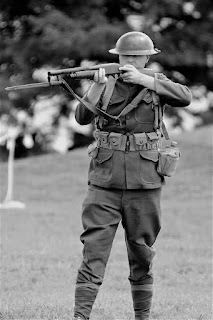The Winchester Model 1897, commonly known as the Trench Gun–world history and facts
The Winchester Model 1897, commonly known as the Trench Gun, was a popular shotgun used by the United States military during World War I. However, during World War II, the Trench Gun was largely phased out and eventually banned from use in combat due to concerns about its lethality and effectiveness.
One of the main reasons the Trench Gun was banned was because of the nature of its ammunition. The shotgun was designed to fire 00 buckshot, which is a type of cartridge that contains multiple pellets. When fired, these pellets would spread out in a wide pattern, making the gun highly effective at close range. However, this also made the gun more lethal, as the pellets could hit multiple targets at once, causing significant damage.
In addition, the Trench Gun was also considered less effective at longer ranges than other firearms, such as rifles or machine guns. This limited its usefulness in many combat situations, particularly in open warfare.
Another reason the Trench Gun was banned from use in combat was due to concerns about its reliability and safety. The shotgun's design made it prone to jamming or misfiring, which could be dangerous in the heat of battle. Additionally, the Trench Gun was more difficult to maintain and repair in the field than other firearms, which made it less practical for use in combat situations.
Overall, while the Trench Gun was a popular weapon during World War I, it was largely phased out and eventually banned from use in combat during World War II due to concerns about its lethality, effectiveness, reliability, and safety.


.jpg)

.jpeg)






Comments
Post a Comment